Andros Island is the biggest of the Bahamas with the fewest people. You catch the spirit of the place when you make your approach into Andros Town airport (where there is no sign of a town) and see the old plane wrecks left along the runway. Much of this 150-mile-long island is an unexplored jungle of coppice, pine, mangroves, sand and mud, all woven with cays, cuts, creeks and channels. You can fish there all your life and still get lost in virgin water.
On South Andros—the wildest, prettiest part of the island—warblers and red-winged blackbirds sing from mangrove forests; ospreys, buzzards and frigate birds sail over rooty shoals; herons stalk coral-crusted marl. My wife, Donna, and I stay at Bair’s Lodge, the best-run fishing lodge we know of anywhere.
Always we listen for the "tide birds," as the natives call them. Maybe, like storm petrels, they are the re-embodied souls of drowned fishermen. I have only seen their fleeting profiles and don't even know what genus they belong to; but I do know that if there is sufficient fire in your gut and fish slime on your scrubs, they will "sing" for you.
Deep in the mangroves they holler when the rising water reaches their toes. The guides can never agree if they are expressing joy or anger. I love to hear the Andros tide birds sing even though they remind me about the brevity of fishing. If J. Alfred Prufrock had been chasing bonefish and listening to tide birds instead of contemplating his navel and listening to mermaids who weren't singing for him anyway, he would never have failed at life.
Even in the hardest wind you can always find a lee. And, even in rain, you will glimpse sleek shadows cast by invisible creatures sweeping over clean sand. Now and then, when everything goes right, some of those shadows will turn and hover and race toward your fly, stopping when you pause, charging when you strip. And, as a wonderful power recharges your mind and muscles through a wisp of graphite, you are barely aware of both the tide birds and guide still hollering "strip, strip, strip."

Finally, if things keep going right, the shadow materializes in your hands as a hard, iridescent silver fish with a pig face, green back, faint vertical bars, and huge eyes full of black pupil.
Most of the flats around South Andros—and even some of the smaller cays themselves—are unexplored and unnamed. You name them as you go. In this, the wildest part of the Andros land mass, dwell creatures that are beautiful and mysterious and sometimes even a little dangerous.
One cannot gaze out over a flat for a full minute without spying something of interest—distant wakes perhaps, a school of jacks, a porpoise and her curious calf, shad, snappers, needlefish, barracuda, sharks, rays, turtles, and, of course, bonefish flowing and scooting over sand and mud in small, nervous formations or milling over coral in huge, dense schools like bullhead fry.
Once I nearly got castrated by a barracuda. The wind was up; the fish were spooky. The guide had dropped Donna and me off on the lee of a long cay (which we named "Long Cay") and polled around to the windward where there was sufficient water to float the skiff. For half a mile we waded on hard, crunchy bottom, with a brisk current tickling the backs of our ankles. Then, three casts ahead, the bottom went from brown to black. I wondered how the wading would be, then realized that the whole flat was shifting and undulating. It was a vast shoal of bonefish that we couldn't see the end of.
They held in the current like trout, occasionally repositioning themselves. We shuffled into casting range and dropped our flies into the mass of fish. Nothing worked.

Finally, we went to a brownish Charlie variant called a "Gotcha," stripping in slow, short jerks that left delicious little puffs of silt. They attacked with abandon—fine, healthy fish of two and three pounds that made the fly line hiss and kick spray.
Every time I'd unhook one I'd say to myself, That's enough, now tie on the long, chartreuse streamer with the wire leader hanging from it and cast to that big cuda. The big cuda was holding just under the surface off my port beam, watching me with baleful, maybe hungry, eyes. But I am eaten and driven. I kept trying for one last bone, and pretty soon I forgot about the cuda. "Rip, rip, reeeepin," sang the tide birds.
Now the stirred-up school had moved offshore into waist-deep water, and the guide—toting my camera bag—had appeared at Long Cay's west end. I was unhooking another fish, and it was thrashing between my legs when, suddenly, it vanished in a hideous explosion. The cuda didn't go between my legs, but I felt his shovel-sized tail on my left thigh. Had his calculations been off an inch either way, he would have ruined our whole vacation.
"Cretin, cretin, creeetin," shouted the tide birds.
IF YOU GO
Choosing a Lodge
Given that South Andros Island is often referred to as the bonefish capital of the world, you probably won't be surprised to learn that anglers headed to fish the famed flats of South Andros Island have options. Around half a dozen bonefish lodges dot the island. While that selection offers anglers plenty to choose from, given the island's expansive size, anglers often go days at a time without seeing a boat from another lodge. The aforementioned Bair's Lodge is one of the oldest and most storied lodges on South Andros, offering oceanfront (which means no-trailering) accommodations and one of the best guide teams in the Bahamas.
When To Go
Most bonefish lodges on South Andros close down for the hottest summer months—July and August—but are open the rest of the year. Prime time for finding the most bonefish is March through June, but fish populations are plentiful throughout the year. And, if your goal is to land one of Andros' true beasts—a bonefish in the 8-12 pound range—your odds are better during the fall and winter months.
Getting There
Service to South Andros Island is through Congo Town airport (TZN). Congo Town is easily reached by connecting through Nassau in the Bahamas, or directly from the U.S. through Ft. Lauderdale executive airport.




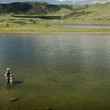
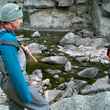

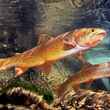



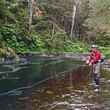
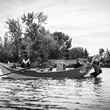



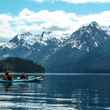
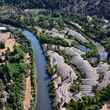



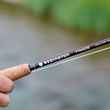
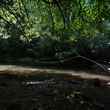



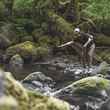
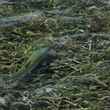



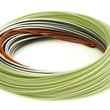
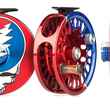
Comments